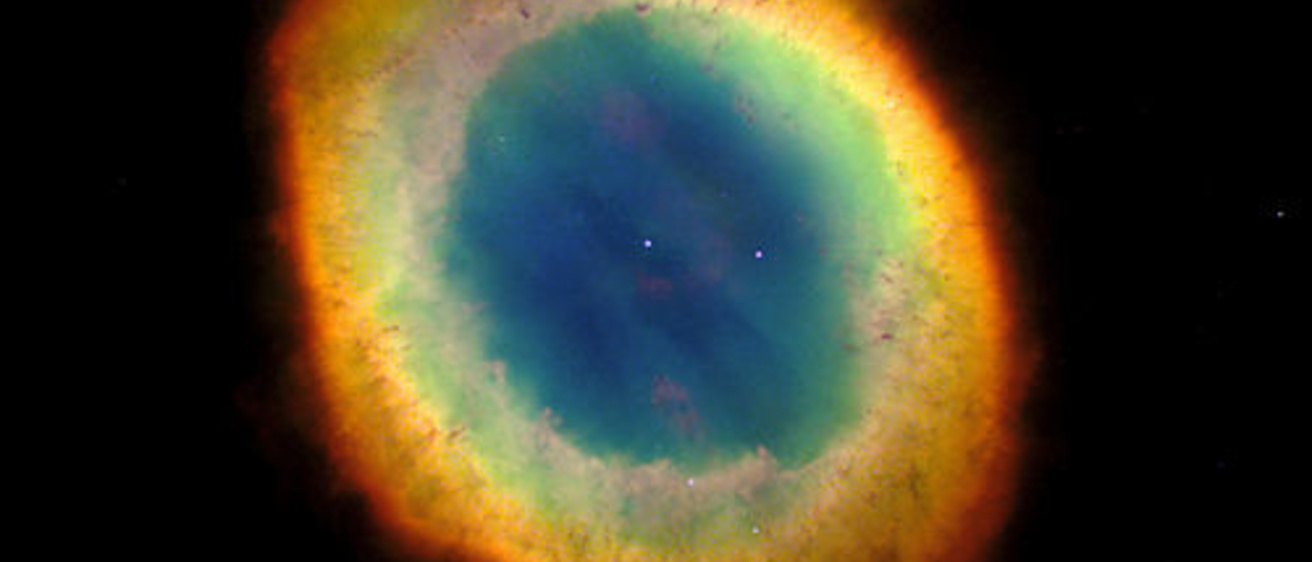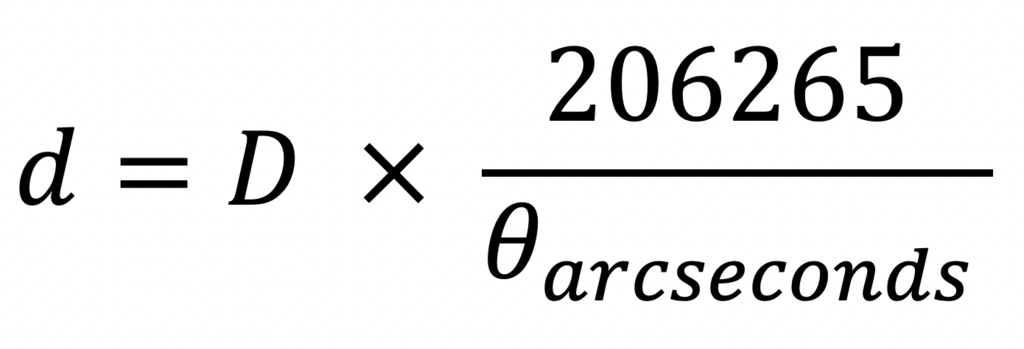
Breadcrumb
- Home
- Labs
- Foundational Labs
- Image Analysis I - Image Processing and the Ring Nebula
- Part 2: The Ring Nebula (M57)
Part 2: The Ring Nebula (M57)
To find the physical size of an astronomical object, remember the Small Angle Formula almost always applies at these sorts of large distances; the angular size of objects in the night sky are small and the approximation can be applied. If you know the angular size of your target on your image in pixels, this can be converted to an angular size in " (arcseconds) by multiplying by the pixel (or plate) scale (the " / pix value). A typical use of the Small Angle Formula in Astronomy is that if the average physical size, D, of an object is known, its distance d can be approximated with the Small Angle Formula for θ (angular size) in arcseconds:

Instead, sometimes the distance d is known but the physical size D is unknown. In these cases, the formula can be rearranged to solve for D as a function of d and angular size θ in arcseconds:

Stellar Remnant
M57 is a planetary nebula: a dead red giant star that sloughed off its outer layers as gravity finally won the billion-year-old battle of outward fusion pressure against inward gravitational force, collapsing the star into a white dwarf.
The dead star at the center, which has a temperature of 100,000K, still emits light. And the ejected red giant atmosphere is still traveling outward at a rate of about 30 kilometers per second (km/s). The Ring Nebula was discovered in the 1770s and remains one of the most recognizable objects in the night sky. The diverse array of colors are from ionized atoms giving off radiation (light). The colors are stratified in rings because of the fact that different distances from the white dwarf experience different local temperatures. Close to the star it might be hot enough to ionize one type of atom, but further out it may only be hot enough to ionize a type of atom that requires less energy. Blues represent the presence of helium, greens represent the presence of oxygen, while reds represent the presence of nitrogen.